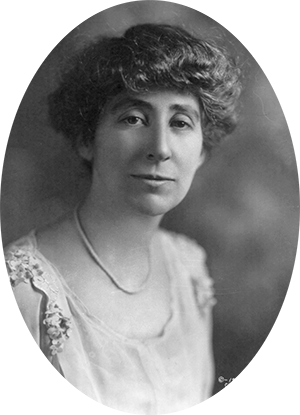Congresswoman Jeannette Rankin (1880-1973)
Page Content

 Jeannette Rankin, U.S. Congresswoman from Montana, 1917. (Courtesy of Library of Congress)
Jeannette Rankin, U.S. Congresswoman from Montana, 1917. (Courtesy of Library of Congress)
“I want to be remembered as the only woman who ever voted to give women the right to vote.”
Growing up on a Montana ranch taught Rankin a rugged sense of gender equality. She graduated from the University of Montana and later attended the University of Washington, where she involved herself in the growing woman suffrage movement. After college she traveled east to help organize and lobby for woman suffrage organizations. She became president of the Montana Women’s Suffrage Association and national field secretary of the NAWSA. In 1911, Rankin became the first woman to argue for woman suffrage to Montana’s state Legislature, helping to pass the measure in 1914.
In 1916, Rankin ran for U.S. Congress as a progressive Republican on a platform of peace and social welfare. Her first vote as a member of Congress was against involvement in World War I after Germany declared unrestricted submarine warfare. Rankin pushed for a congressional committee on woman suffrage, which proposed a constitutional amendment granting women suffrage in 1918. Rankin opened the floor debate and voted “yea” in the House, which passed the measure, but the Senate overturned the bill.
She ran for the U.S. Senate that same year, but only came in second in the Republican primaries. Rankin ran for Congress again in 1940 at the age of 60 and won. Her commitment to peace still guided her politics, and in 1941 Rankin was the only member of Congress to vote against declaring war on Japan after the attack on Pearl Harbor. Holding to her beliefs was wildly unpopular with the public, and she would not seek office again, retiring to a life of social activism.
Next:
Harriet "Hattie" Redmond >